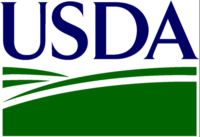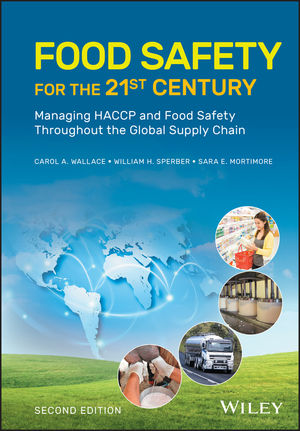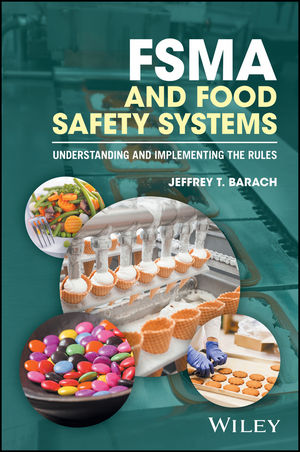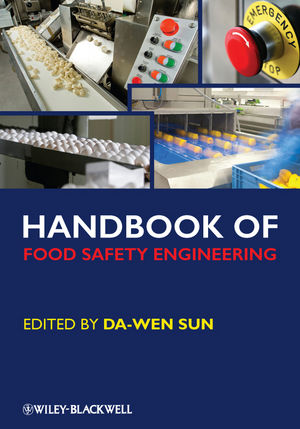Laboratory Testing: The Price of Bad Data

Testing for harmful substances within food or the food manufacturing facility serves an important role in verifying the safety of our food supply. While food safety professionals point to the execution of the food safety system to ensure the safety of foods, it is often the piece of paper from the laboratory, confirming the sample was “cleared,” that signals, for many, that it is time to exhale. While sampling and testing for adulterants can fulfill significant objectives in a food safety program, the implications are profound and often painful if not done properly. The title of this article is really a misnomer, as data are neither good nor bad—yet it will be used to describe data generated that are not valid and do not accurately determine the presence/absence of a contaminant. Here, I will discuss these implications and create the case for a methodical review of the analytical testing program.
What Has Changed?
Food manufacturers must take immediate precautionary steps to protect public health when an adulterant is detected during analyses of samples. The presence of the adulterant (i.e., a positive test result) in the food is typically unexpected and immediately mobilizes efforts to understand whether there are hypotheses that span the entire supply chain from ingredients through production to explain the test result.
Invariably, the laboratory scientist will be asked whether there is any reason to question the validity of the test result. While the search for answers is always a crisis-mode investigation, what has changed is the regulatory requirement that a company reports to the Reportable Food Registry. A company must report to this U.S. Food and Drug Administration (FDA) registry within 24 hours if it determines that a food transferred to another party contains an adulterant where there is a reasonable probability that use of, or exposure to, that food will cause serious adverse health consequences or death to either humans or animals. When the validity of a test result is questioned, the one thing the scientist in the laboratory always wants more of is time. Too often, this time is spent in crisis mode, working feverishly to determine whether the method is valid for a particular food matrix or to diagnose potential cross-reacting substances. Postmortem, one always wishes the question of whether a method is valid for a food matrix had been raised before the test was performed. Recognizing this dilemma, the FDA has repeatedly stressed the importance of using validated test methods.[1]
What Is Adulteration?
The FDA says a food is adulterated “if it bears or contains any poisonous or deleterious substance which may render it injurious to health.” This could include chemical contaminants (e.g., melamine), metals (e.g., lead, mercury), natural toxins (e.g., mycotoxins), filth and extraneous matter, pesticides and disease-causing organisms (e.g., Salmonella). As will be discussed below, the food is also deemed adulterated when it is produced under conditions whereby it may be adulterated.[2]
Why Test?
Developing a sampling and testing plan is a daunting exercise. The route adulterants take to contaminate food is often complex and not well understood. Likewise, their distribution within the food is typically not random. Despite these limitations, the meaning attributed to these results is often far greater than it deserves to be, and the scientific limitations of the sampling plan are all but forgotten. When an inadequate sampling and testing scheme is applied to a food with limited understanding of the route(s) of contamination and distribution, the lot deemed to be “acceptable” may be “unacceptable” if more samples are analyzed. The value of this type of “blind” sampling and testing is limited.
This sampling and testing dilemma highlights the importance of taking the time to proactively conduct a thorough hazard analysis of the entire manufacturing and distribution process of all components of the food and implementing robust and verified preventative controls to ensure these identified hazards do not enter the food process. As directed in the Food Safety Modernization Act enacted in January 2011, it is clear that FDA will put significant focus on companies implementing preventative controls based on their hazard analysis of the ingredients and manufacturing process.
Product safety does not occur through testing. Rather, it occurs through the implementation of robust preventative controls based on in-depth hazard analyses of all components of the supply chain. Testing then serves as a verification of the adequacy of these preventative controls. There is an inclination by many to test for the presence of an adulterant when an unexpected event occurs under conditions whereby the food could have been contaminated. It is important to remember that from a federal regulatory perspective, these conditions alone deem the food to be adulterated. Testing to reveal the absence of the adulterant won’t change the fact that conditions existed whereby the food may have become adulterated. While testing in these circumstances can be informative in guiding and supporting decisions pertaining to the safety of the food, an acceptable test result doesn’t mean the event didn’t occur and, consequently, can’t be used as the sole determinant of the acceptability of the food.
Scientific Defensibility
The goal for anyone developing a sampling and testing scheme should be that it could withstand scientific scrutiny. The time for assessing the scientific defensibility of the sampling and testing scheme is not during crisis but rather in a proactive methodical approach in which the choices made are reasoned and documented. A number of decisions need to be made regarding sampling, testing and the selection of laboratories when developing the sampling and testing scheme. A select few of these are discussed below:
• Securing the sample. The objective of securing a sample is to ensure the subject material placed into the sampling container is free from all contaminants that will be surrounding the material. Such contamination may include foreign substances on the packaging immediately surrounding the subject material and the larger surrounding environment. Careful scrutiny and, of course, training of personnel must be conducted to ensure that the material is not contaminated during sampling.
• Sample number. There are many considerations when determining the number of samples to secure. Experience has taught the author that consulting a statistician to review the testing purpose and objectives, including the production process and probable routes of potential contamination, helps in selecting the number of samples to secure.
• Test method. Advances in many scientific disciplines have increasingly provided the food industry with test methods that are both sensitive and rapid. However, it is important to remember that while we enjoy a vast array of different types of foods in our diet, it is often complex and perhaps impossible to have an adulterant extraction protocol and test method that can detect the adulterant in this wide range of foods. Some compounds are known to inhibit adulterant detection (false negative) or conversely will cause positive test results, indicating the presence of the adulterant when it is absent (false positive). As said previously, the time to learn that a food matrix interferes with the test method is not during the crisis. Efforts must be applied prior to the analysis to understand the validity of the test method with that particular food matrix.
• Testing laboratory. A significant ongoing investment in quality programs, resources and training is necessary to proactively and defensibly position the laboratory when it is questioned on the validity of a test result. This type of laboratory has systems in place to trigger the proactive method validation of new/novel food matrices. This laboratory likewise maintains laboratory quality systems to determine when a unique event has occurred and when the results may not be valid. The universe of substances that may present a risk to the food industry is increasing, as is the sensitivity of test methods. Individuals running these laboratories are faced with new and exciting technologies that invariably bring new opportunities and findings. The difference between a good lab and a great lab is that the latter has quality systems in place to know when a result may not be valid. ISO 17025 is the primary standard laboratories use to certify their ability to produce valid test results. When an unexpected contaminant is detected in a food, it is vital that the testing laboratory has maintained the quality systems and has proactively validated the method against the food matrix. Firms using contract-testing laboratories need to have systems in place and partnerships with their testing laboratory to determine when validation must be conducted on these new/novel foods. When the laboratory’s quality system indicates that the test result may not be valid, it is imperative to notify the customer immediately about this uncertainty and to define the next steps that must be taken.
The Price of Bad Data
The generation of inaccurate data through the use of nonvalidated sampling and testing methods is a lose-lose proposition. The worst of all outcomes is that public health is put at risk when these methods fail to detect the contaminant. Conversely, the generation of inaccurate data revealing a false-positive test often leads to business disruption and reputation damage, as companies in the midst of a crisis and with insufficient data rightly lean toward protecting public health and removing food from the marketplace. In both instances, the painful lesson is that the analytical verification program must be closely scrutinized to ensure that information generated by the laboratory can confidently withstand scientific scrutiny.
Mark Moorman, Ph.D., is the senior director of global regulatory science for the Kellogg Company in Battle Creek, MI, with responsibilities for understanding the science and regulatory environment for the global portfolio of Kellogg products. He is on the board of directors for the Food Allergy Research and Resource Program and has chaired the American Frozen Foods Institute’s Microbiology Committee and the Grocery Manufacturers Association’s Microbiological Safety Committee. Prior to joining the Kellogg Company in 1998, Mark spent 10 years with Silliker Laboratories as the technical director of microbiology and was responsible for assisting clients with microbiological food safety and quality issues. He earned his undergraduate and Ph.D. degrees from Michigan State University in microbiology and food science.
References
1. www.fda.gov/Food/GuidanceComplianceRegulatoryInformation/GuidanceDocuments/FoodSafety/ucm165626.htm.
2. www.fda.gov/food/foodsafety/foodcontaminantsadulteration/default.htm.
Looking for a reprint of this article?
From high-res PDFs to custom plaques, order your copy today!








